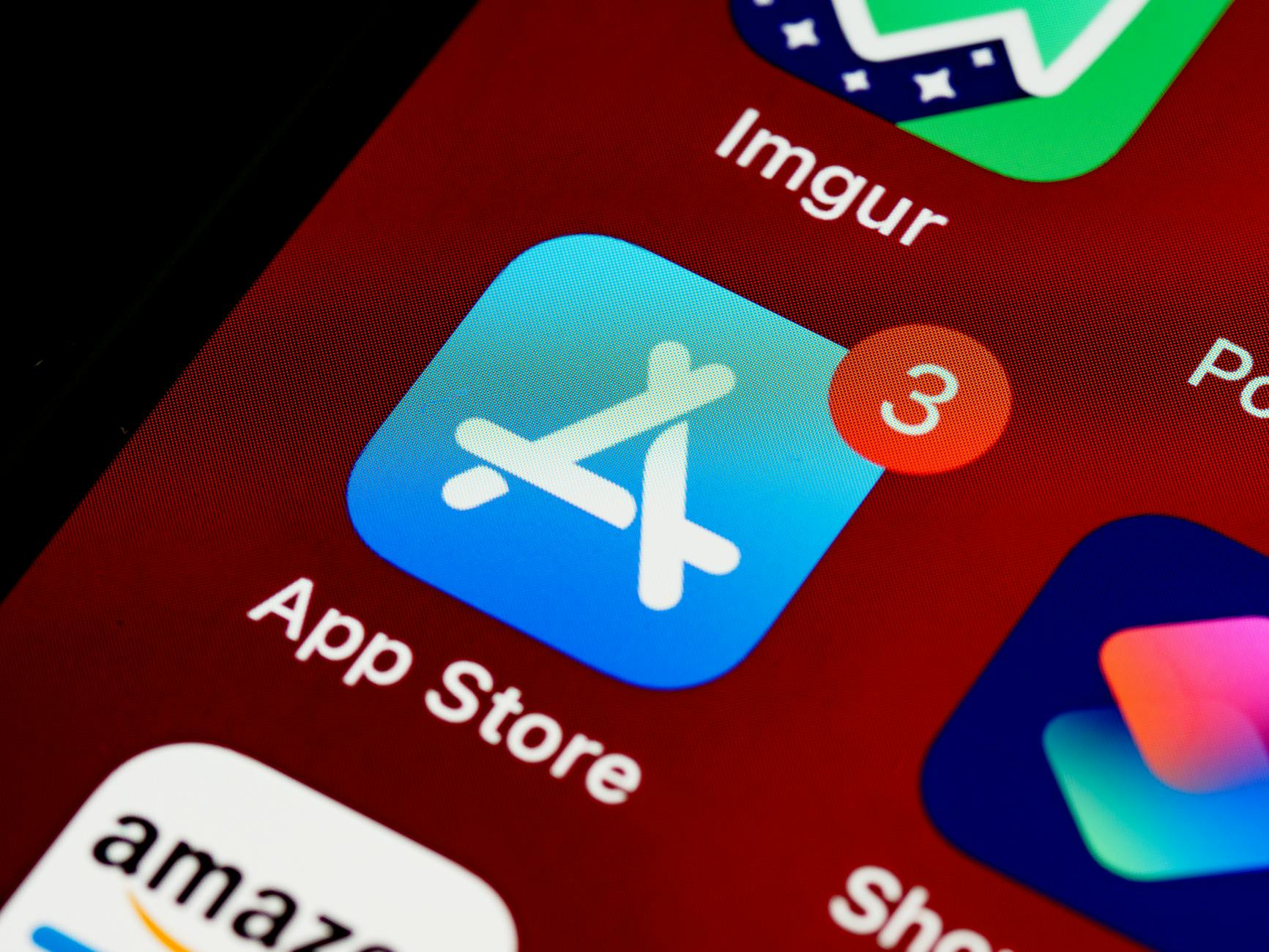Navigating Approval Maze: App Store Review Process
App Store Review Processes
Getting your app onto the Apple App Store or Google Play Store ain’t no walk in the park. Let’s break down what these gatekeepers are lookin’ for so your app can stand up tall and proud on these platforms.
Apple App Store Guidelines
Apple’s review process is a tough nut to crack. They’ve got this reputation for being picky because they want the cream of the crop. Every app you toss in there gets a once-over against their App Store Review Guidelines and Developer Code of Conduct. This ain’t a pencil-pushin’ job — they got experts peepin’ at your app to make sure it’s up to snuff on quality, privacy, and security.
Main bits Apple cares about:
- Security: They’re checking for any sneaky malware and making sure your app keeps the user’s data under lock and key.
- Content: Your app’s gotta keep it clean for everybody because they don’t play around with content rules.
- Functionality: Your app better work like a Swiss watch — no glitches allowed.
- User Experience: If your app’s a pain to use, forget about it. They want smooth sailing with easy navigation and great usability.
| Guideline Area | Key Requirement |
|---|---|
| Security | No malware, data protection |
| Content | Good for all ages |
| Functionality | Bug-free, gotta work right |
| User Experience | Easy to use, no hair-pulling |
The full scoop with examples is over at the Apple Developer page. If you’re curious about how the big apples stack up against Google, peep our apple app store vs google play store comparison.
Google Play Store Criteria
Now, Google Play’s got its own hoops, but they tend to be a little more chill. They size up apps based on their Google Play Developer Policy, making sure they tick the boxes for safety, functionality, and user happiness.
Google’s checklist:
- Security: They’re watching out for bad vibes in the app, like shady behavior or sneaky data grabs.
- Content: Got rules against stuff that’s not family-friendly or might hurt someone.
- Performance: Needs to run without hiccups and keep users happy.
- Compliance: Play by the rules, follow the law, and don’t try any funny business.
| Criteria Area | Key Requirement |
|---|---|
| Security | Safety first, privacy matters |
| Content | Keep it clean and safe |
| Performance | Works like a charm |
| Compliance | Play it by the book |
If you want the cheat sheet on how these stores line up, hit up our app store features comparison. For why some folks dig the Google vibes, check our google play store advantages.
This whole app-review shindig can feel like hitting a pinata blindfolded, but don’t sweat. Knowing what these big guys are after gives you a leg up, so you can dodge rejection and get your app out there. For those geeky types into ranking algorithms, see our app store ranking algorithms.
Keep this know-how in your noggin, and you’ll have a better shot at getting your app in the hands of people everywhere.
Data Privacy Requirements
Keeping data private ain’t just a fancy term—it’s the bread and butter for app makers, especially when dealing with app store reviews. Let’s break down a couple of big-shot rules and how to whip up a privacy policy that ticks all the boxes.
GDPR and CPRA Compliance
The General Data Protection Regulation (GDPR) and the California Privacy Rights Act (CPRA) lay down the law on data privacy for mobile apps:
GDPR Compliance
The GDPR says if you’re going after EU folks, you gotta:
- Make sure users know and agree before swiping their info.
- Let folks know upfront how their data’s gonna be used.
- Spell out how they can take charge of their own data.
CPRA Compliance
The CPRA, beefing up the California Consumer Privacy Act (CCPA), insists on:
- Letting folks know about any third-party data hand-offs.
- Explaining tracking setups in plain terms.
- Giving straightforward steps to fiddle with data settings.
Not following these rules could cost you big time. For the nitty-gritty on these laws and how they affect your app, jump on over to our guide on app store features comparison.
| Compliance Aspect | GDPR | CPRA |
|---|---|---|
| Consent Need | Yes | Yes |
| Data Collection Disclosure | Yes | Yes |
| User Data Control | Yes | Yes |
| Tracking Mechanisms | Detailed | Detailed |
Privacy Policy Essentials
Getting a privacy policy together is key to checking off GDPR and CPRA needs. It should be out there for everyone to see and easy to read. Here’s what you gotta put in:
Key Elements to Include
- Data Collection: Outline what’s gathered—names, emails, where you’re at, etc.
- Data Usage: Say how that info gets put to work.
- Third-Party Services: Tell users if their info gets shared with outside helpers.
- User Rights: List out what folks can do about getting, fixing, or trashing their data.
- Contact Info: Give them someone to holler at if they’ve got questions.
For a deeper dive into setting up a privacy policy, check out our article on google play store perks.
Here’s a sample structure for your privacy policy:
| Section | Description |
|---|---|
| Introduction | Short intro on how the app looks after data privacy. |
| Data Collection | What types and why you’re grabbing data. |
| Data Usage | The scoop on how data gets used in the app. |
| Third-Party Services | Names of outside companies that might handle data. |
| User Rights | What users can do concerning their data rights. |
| Contact Information | Details for privacy questions or issues. |
Stick to this blueprint, and app makers will breeze through the app store review process like a fish in water. For extra help on legal text and slotting them into your app, browse over our resources on app store ranking tricks.
Security Measures
Locking down user data isn’t just a box-ticking exercise when it comes to the app store review process. Apple and Google lay down some serious rules to keep user data out of harm’s way. Let’s break down how to guard user info and stay on the good side of the Federal Trade Commission (FTC).
Protecting User Data
Keeping user data safe is like gold in the world of mobile apps. The Apple App Store and Google Play Store demand tight security steps to stop bad guys from sneaking in and wreaking havoc. Check out the Apple Developer Guidelines, and you’ll see they want apps to keep user data secret, using solid security to stop third parties from peeping at it. Mess it up, and your app’s out the door.
Here’s how to keep your app airtight:
- Data Encryption: Lock up user data with encryption when it’s being sent around or just lounging about.
- Authentication: Step up to multi-factor authentication, making sure only the right folks get the keys to the kingdom.
- Access Controls: Keep a tight grip on who sees what – only the folks who need to look get a peek.
- Regular Updates: Keep the app fresh and fixed up with updates to close any gaps that pop up.
Compliance with FTC Standards
The FTC doesn’t mess around when it comes to laying down rules for user data (Termly). Stick to their playbook if you want your app to pass muster and keep users trusting you.
Here’s what the FTC’s got to say:
- Notice and Transparency: Let users know what data you’re gathering and why – no surprises.
- Consent: Ask nicely before you take, use, or share user data.
- Data Minimization: Don’t get greedy – grab only the data you really need.
- Security: Put in place strong security to keep user data under wraps.
- Accountability: Be ready to explain your data habits when users or watchdogs come calling.
Below’s a quick rundown of both security moves and FTC must-dos:
| Security Move | What It Means |
|---|---|
| Data Encryption | Keep user data locked up tight while moving and stationary |
| Authentication | Use multi-factor checks to secure access |
| Access Controls | Let only the right eyes see data |
| Regular Updates | Patch it up to keep it safe |
| FTC Rule | What’s Expected |
|---|---|
| Notice and Transparency | Let users know how you collect and use their data |
| Consent | Get user permission beforehand for data handling |
| Data Minimization | Collect only the data you need |
| Security | Use strong measures to keep data safe |
| Accountability | Be ready to talk data protection with anyone who asks |
By ticking off these security steps and FTC rules, you’re not just safeguarding user data. You’re giving your app a better shot at getting the green light from Apple and Google. Curious about more app store insights? Check out our articles on app store features comparison and app store ranking algorithms.
App Review Timelines
Getting an app approved can feel like waiting in line at the DMV – a headache! Especially when each app store has their own idea of what “fast” means. Let’s break down how long it usually takes for your app to get that golden green light and what to do if things are taking forever.
Average Review Times
Every minute waiting feels like an eternity. Here’s a peek into how long you’ll probably be kept in suspense by the Apple App Store and Google Play Store.
| App Store | Review Time (Hours) | Notes |
|---|---|---|
| Apple App Store | 24 – 48 | 50% are done in a day, and 90% in two (Apple Developer Forums) |
| Google Play Store | 3 – 7 Days | Expect longer waits during Christmas or New Year |
Apple’s usually doesn’t take more than a week, though at times it might drag on for over two weeks if everyone is off celebrating something (Apple Developer Forums). Over at Google Play, it’s the same setup, meaning 3 to 7 days, but prepare for a sit-in during busy periods.
Dealing with Delays
No one enjoys waiting longer than they should. Here’s how you can handle those hold-ups:
-
Plan for Busy Seasons: Holidays mean more delays. Get your app in queue before Santa does.
-
Stick to the Rules: Follow those Apple App Store Guidelines and Google Play Store Criteria to a T. Otherwise, you might find your app back at the starting line.
-
Explain Thoroughly: If your app has a feature that might leave a reviewer scratching their head, make sure you spell it out in the documentation. That way, they can understand instead of guess.
-
Stay Engaged: Keep an eye on your app’s review status and be quick to reply to any questions the reviewers throw your way.
-
Test, Test, Test: Before hitting submit, make sure your app isn’t going to crash in a spectacular fashion. Catch those bugs early to avoid the rejection pile.
Waiting out these delays ain’t a walk in the park, but by knowing what stretches review times and using a bit of foresight, you can dodge some of the headaches.
Want more tips? Don’t miss our articles on app store features comparison and google play store advantages.
App Rejections and Appeals
Nobody likes rejection, but when it comes to getting your app on the store shelves, knowing why apps get booted and how to fight back is half the battle. So let’s get familiar with some of the common reasons your app might get the boot and what you can do about it.
Common Rejection Reasons
Here’s the lowdown: both Apple and Google have a laundry list of rules your app has to follow if you want a ticket to their store. Here’s what’s tripping up a lot of apps:
- App Completeness: More than 40% of app rejections come down to guideline 2.1: App Completeness. It’s like showing up to a party without pants—crashes, unfinished stuff, or stand-in content will get you tossed (RevenueCat).
- Minimum Functionality: If your app feels like half-baked bread, it might bounce thanks to guideline 4.2. They want apps that can stand on their own two feet, no training wheels allowed (RevenueCat).
- User Ratings: Fiddling with user ratings—twisting arms for stars or tricks to game the system? Hard no. It’s all about keeping ratings legit (RevenueCat).
- Privacy Policy: Guideline 5.1.1(i) says you gotta have a privacy policy link both in the app details and in the app itself. Don’t skip it or they’ll skip right over your app (RevenueCat).
- Safety, Performance, and Design: Problems here might include safety glitches, poor performance, butt-ugly design, legal goodies, and how you’re running your ship (Glance).
| Reason for Rejection | Percentage |
| – | – |
| App Completeness | 40%+ |
| Minimum Functionality | Who knows? |
| User Ratings Shenanigans | They ain’t telling |
| Privacy Policy Flubs | Nada |
| Safety, Performance, and Design | No deets |
Filing an Appeal
Got the rejection blues? Don’t throw in the towel just yet. Both Apple and Google give you a shot at redemption through their appeal process. Here’s how to make your case:
- Understand the Rejection: Get cozy with the rejection notice and pinpoint exactly where you went off track. Wrong fixes for wrong problems won’t help, so know what you’re up against.
- Correct the Issues: Fix the oopsies. Cross those t’s and dot those i’s to meet the guidelines. You want your app squeaky clean before hitting submit again.
- Prepare Your Appeal: Craft a sharp, to-the-point appeal. Lay out the hows and whys of your changes, and make a case for why your app deserves a second chance.
- Submit the Appeal: Head over to the developer console and fill out the appeal form. Both Apple and Google lay out the steps so you’re not flying blind.
Keep it cool, concise, and professional. Nail your appeal with clear proof and snappy documentation, and you might just turn that no into a yes.
Knowing why apps get denied and figuring out the appeal game is like having a cheat sheet for getting your app past the bouncers. Want more tips on how Apple and Google’s review stuff stacks up? Check out our guides on app store review processes and Apple App Store vs Google Play Store for the scoop on how to make each platform work wonders for you.
Legal Obligations for Developers
Got an app idea? Awesome! But before you toss it in the app store, there’s some legal stuff to tackle. Let’s talk about keeping your intellectual property safe and making sure your app works for everyone, including folks with disabilities.
Intellectual Property Rights
Nobody likes a copycat. When you’re building an app, checking off the intellectual property box is a must. This means locking down copyrights, trademarks, and patents to protect your baby and keep other folks from claiming it as theirs.
- Copyrights and Trademarks: Think of this as your app’s armor. Pin a trademark on your app’s name, logo, and any original stuff (Forward Law Firm). It’s like having a big “Do Not Touch” sign to avoid messy brawls.
- Terms of Service (ToS) and End-User License Agreements (EULA): These are like the house rules for your users. Make ’em clear, simple, and stash those secrets safe, ensuring nobody makes off with your brilliance (Forward Law Firm).
| What’s Needed | Why it Matters | Quick Example |
|---|---|---|
| Trademark | Protect app name/logo | App Name™ |
| Copyright | Guard your design & content | Logo, UI stuff |
| ToS and EULA | Spell out the usage rules | How-to-use terms |
If you’re eager to see your app shine on heavy-hitters like the Apple App Store and Google Play Store, nailing down these intellectual property rights is non-negotiable. For more tips and tricks, check out our article on apple app store vs google play store.
Accessibility Standards
Being in the app game isn’t just about what’s good for you; it’s about making sure nobody’s left in the dust, including folks with disabilities. In the U.S., laws like the ADA make sure of that.
- Americans with Disabilities Act (ADA): It’s the law that says apps need to work for everyone, even those with hearing or vision challenges. Your app better play nice with tools like screen readers (Forward Law Firm).
| Access Needs | What You Gotta Do | Handy Tip |
|---|---|---|
| Screen Reader Compatibility | Make app speak with assistive tech | Alt text on pics |
| Color Contrast | Right colors for visibility | Light text, dark background |
| Keyboard Navigation | Work without a mouse | Tab key rules! |
Following these rules doesn’t just keep you outta trouble, it brings more users to the table. Stay looped into what’s going down with new ADA compliance updates.
By checking these boxes, you’ll have an easier time when the app stores start scrutinizing your work, giving you a better shot at reaching more users. Peek at our articles on app store features comparison and google play store advantages for more savvy insights.
Busting Through App Store Legal Chaos
Getting through app store legal chaos is like trying to solve a puzzle with invisible pieces. For top-notch spots on heavyweights like Apple’s App Store and Google Play, staying informed ‘n compliant ain’t just important—it’s survival 101.
ADA Compliance Updates
The Americans with Disabilities Act (ADA) is kind of a big deal for app folks in the U.S. The law’s got a big ol’ list of do’s and don’ts—think “be user-friendly for everyone,” especially those with hearing or vision challenges. We’re talkin’ make apps play nice with the tools folks use, like screen readers (Forward Law Firm). Y’all gotta keep sprucing up your apps to hit these targets.
| Thing to Do | The Lowdown |
|---|---|
| Screen Reader Fun | Make apps sing with screen readers |
| Text in Place | Give words for stuff that’s not text |
| Text Resize | Let folks grow or shrink text their way |
Keep up with ADA tweaks, and you’ll open those app doors wide for everybody. Get cozy with the newest ADA rules and lean on tools that make apps easier to use for all kinds of users.
Keeping Up With the Rules
App regs are like your moody teenage cousin—always changing. Gotta stay sharp with rules that shape your app’s life. Stuff like GDPR, CPRA, and the FTC’s bag o’ rules keep shoving the pieces around on the app design chessboard (Forward Law Firm).
Where you need to focus some regular TLC:
- Data Privacy – Stick to GDPR and CPRA rules. They say you gotta spill the beans on who’s handling data (Termly).
- Security – Follow FTC standards to guard user data like it’s Fort Knox (Apple Developer).
- Platform Rules Galore – Stick to Apple’s and Google’s guidelines. Apple’s review process includes a squad of 500 experts giving your app the once-over (Glance).
To keep your brain fed with the latest:
- Tune Into the Buzz – Dig into the latest chats; reliable news beats never hurt anyone.
- Hit Up Workshops & Webinars – Swing by some learning hangs where app stuff and legal tales meet.
- Compliance Gizmos – Trusty tools that give you the 411 on legal shifts and must-dos.
If you know the ropes, gliding through that app store review maze isn’t as rough, and you might stay ahead in the race. For the inside scoop on Google Play Store and Apple App Store, peek at our app store features comparison.
Challenges and Uncertainties
Figuring out the app store review process can feel like a puzzle, with bits and pieces that don’t always fit neatly. It’s like trying to ride a bike down a convoluted path. To keep your app afloat on platforms like the Apple App Store and Google Play Store, you need to be clued up on their rules. Let’s take a look at the twists and turns developers face.
Ambiguities in App Approval
One thing that really throws developers for a loop is the way app approvals are handled. Sometimes, out of the blue, an app gets the boot without a concrete reason explaining which rules were bent or broken. Over on the Apple Developer Forums, developers spill the tea on how they’ve been sidelined for what they describe as ‘business choice’ reasons, not for breaking any rules. This murkiness makes it tough to pinpoint why an app was rejected and equally tricky to sort it out.
The wild card here is that Apple can flip the rules any time they want. So even if your app was once a poster child for compliance, bam—it’s suddenly outside the lines because a rule changed overnight.
Legal Battles with Tech Giants
Sometimes developers feel like they have no choice but to strap in for a courtroom showdown with these tech behemoths, but it’s often a pricey and uncertain bet. Take one developer’s tale: their app was canned for facilitating cash exchanges and meetings, even though they promised to keep it legal by restricting regions (Apple Developer Forums). They tried to make amends and still got shot down.
Going up against Apple or Google legally can be an uphill battle, demanding deep pockets and a brave heart. With talks of unfair play swirling, some developers are tempted to challenge the giants, but doing so can burn more cash than it’s worth.
| App | Common Rejection Reason | Legal Consideration |
|---|---|---|
| Cash Transaction App | Vague “Business Choice” | Costly, with uncertain outcomes |
| Currency Exchange App | Meetings in-person issues | Claims of unfair business tactics |
For developers staring down these foggy paths, knowing the hurdles is half the battle. To get the full scoop on how these services stack up, take a peek at apple app store vs google play store and get the lowdown on google play store advantages. If you’re curious about how to climb the ranking ladder, swing by our app store features comparison page for more info.













